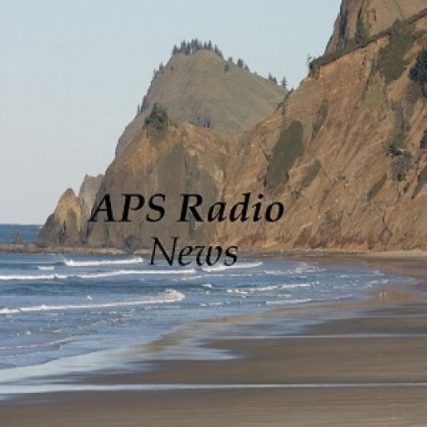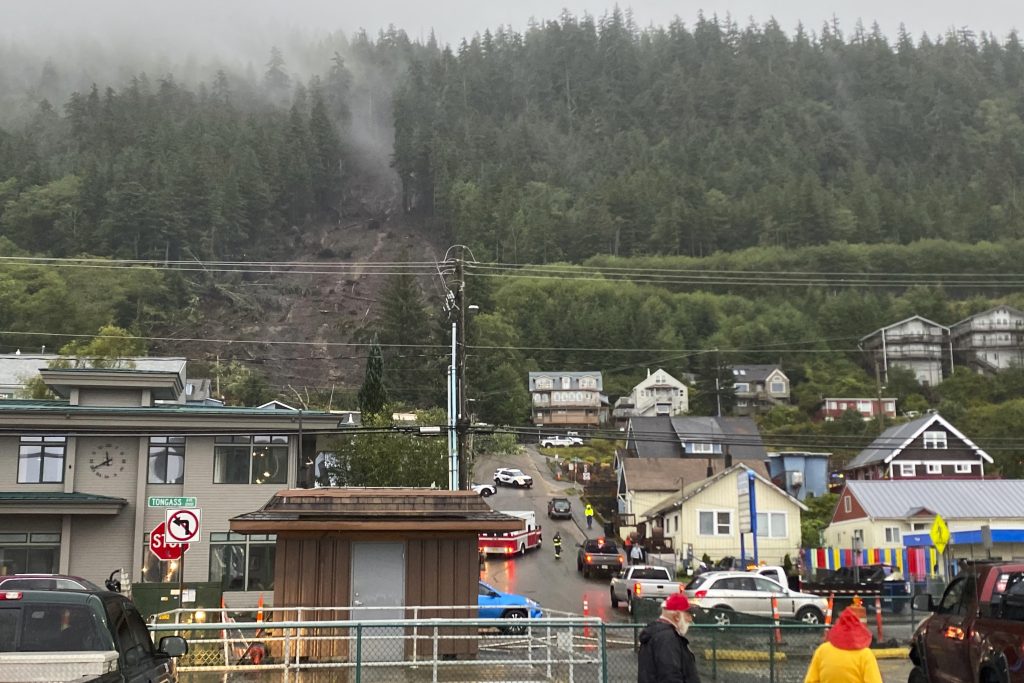By Becky Bohrer and Mark Thiessen Associated Press Ketchikan landslide bulletin news
Juneau, Alaska (AP) — A landslide cut a path down a steep, thickly forested hillside and crashed into several homes in Ketchikan, killing one person and injuring three in the latest such disaster to strike mountainous southeast Alaska.
The landslide Sunday afternoon prompted a mandatory evacuation of nearby homes in the city, a popular cruise ship stop along the famed Inside Passage in the Alaska panhandle. The slope remained unstable Monday, and authorities said that state and local geologists were arriving to assess the potential for further slides.
Last November, six people — including a family of five — were killed when a landslide destroyed two homes in Wrangell, about 100 miles (161 kilometers) to the north. Torrential rains were blamed for landslides that killed two people in Haines in 2020 and three people in Sitka in 2015.
“In my 65 years in Ketchikan, I have never seen a slide of this magnitude,” Ketchikan Mayor Dave Kiffer said in a statement. “With the slides we have seen across the region, there is clearly a region-wide issue that we need to try to understand with the support of our State geologist.”
He said the loss of life was “heartbreaking, and my heart goes out to those who lost their homes.”
Ketchikan landslide bulletin news
The landslide followed a weekend bout of rain amid an abnormally dry August, said Andrew Park, a meteorologist in Juneau with the National Weather Service. The weather service early Monday said Ketchikan had received about 2.6 inches (66 millimeters) of rain in about 36 hours, though rainfall totals at higher elevations nearby ranged from 5 to 9 inches (127 to 229 millimeters).
Landslides can be unpredictable, but this one occurred without certain other risk factors, such as high winds, Park said.
“There weren’t any of the big red flags we would normally see,” he said.
Leah Canfield was trying to nap when the slide struck. She saw a flash of light — she initially thought lightning, but it was likely an electrical conductor exploding, she said — and then her house started rumbling. She woke her spouse, and they grabbed their dogs and headed outside.
“When we started coming down the stairs, we’ve seen that, you know, there’s a lot of debris that was flying around outside our office window and realized, you know, that this is probably much bigger than just an earthquake,” she said.
They found that their neighbor’s home had plunged downhill, part of it coming to rest in their front yard. Another two-story house next door partially collapsed and slid into a different home, knocking it off its foundation. Trees, debris and a telephone pole landed on the roof of Canfield’s home, but Canfield said she believed the house could be salvaged.
(Please click onto the image of the cat to hear Oldies & Classic Rock)

After calling family members to let them know they were OK, they walked about 20 minutes to a hotel, because their pickup truck was buried by uprooted trees.
Ketchikan landslide bulletin news
Ketchikan is surrounded by the Tongass National Forest, a temperate rainforest that encompasses much of southeast Alaska. Landslides strike often in the region, but garner little notice when they hit remote, unpopulated areas.
But as climate change intensifies storms and destabilizes soil, they are posing more risk to communities.
Because of the steep terrain, there’s limited room for development in the region, and cities and roads are built at the base of slopes. Increasingly, landslides are occurring in inhabited areas of “old infrastructure that’s been built in harm’s way,” said Aaron Jacobs, a meteorologist and senior service hydrologist with the National Weather Service’s Juneau office.
“It’s just becoming more and more common that they’re impacting people,” Jacobs said.
Jacobs planned to travel to Ketchikan on Monday to study the soil composition in the area and try to pinpoint why it occurred when the area had been in a period of drought before the weekend’s rainfall.
“We’re going to learn more about this and hopefully we can figure out what caused it and then we can move forward on it,” he said.
Alaska Gov. Mike Dunleavy declared an emergency for Ketchikan, while Kiffer and Ketchikan Gateway Borough Mayor Rodney Dial issued a separate emergency declaration. A shelter was set up at Ketchikan High School.
Ketchikan landslide bulletin news
Two of the victims in Ketchikan were admitted to the hospital and one was treated and released. All other individuals were accounted for, the city and borough said in a joint statement.
It wasn’t immediately clear how many homes were damaged; the state transportation department was sending a drone operator to Ketchikan to help assess the slide.
Michael Robbins, the superintendent of schools in Ketchikan, said in a statement on social media that a dozen people were staying at the shelter at the local high school as of Monday morning.
But people often stay with friends or relatives after such events, so it remained unknown how many were displaced.
Power was restored to some of the area by 8:15 p.m. Sunday. Other areas will remain without power while the landslide is cleared and broken power poles are replaced.
Landslides include debris flows often triggered by heavy rains. When logging or fire destroys trees, the loss of root structure can weaken soil. Rain that isn’t being sucked up by plants can saturate the ground, making it more likely to slide. Other types include creeps, which move slowly downward, and rock falls.
In Alaska, melting permafrost, retreating glaciers, earthquakes and pounding rains can all trigger landslides.
Thiessen reported from Anchorage, Alaska. Leah Willingham in Charleston, West Virginia, contributed.
Ketchikan landslide bulletin news


